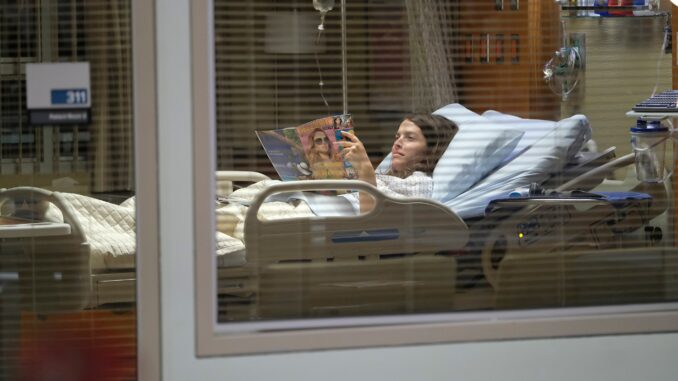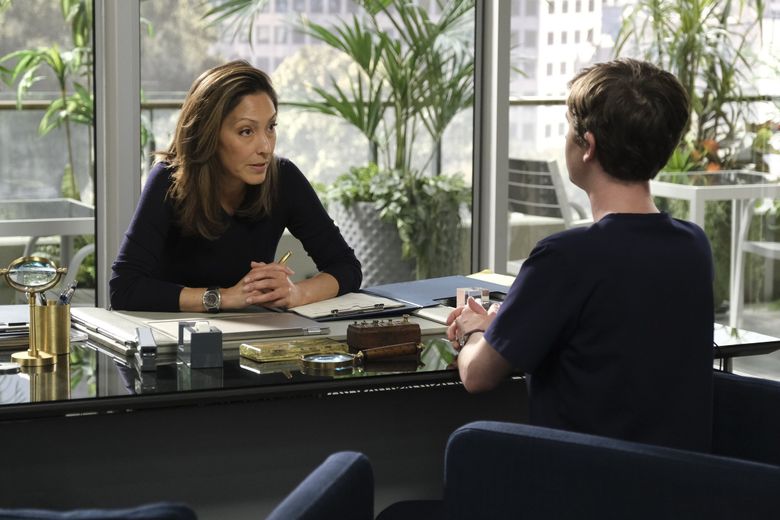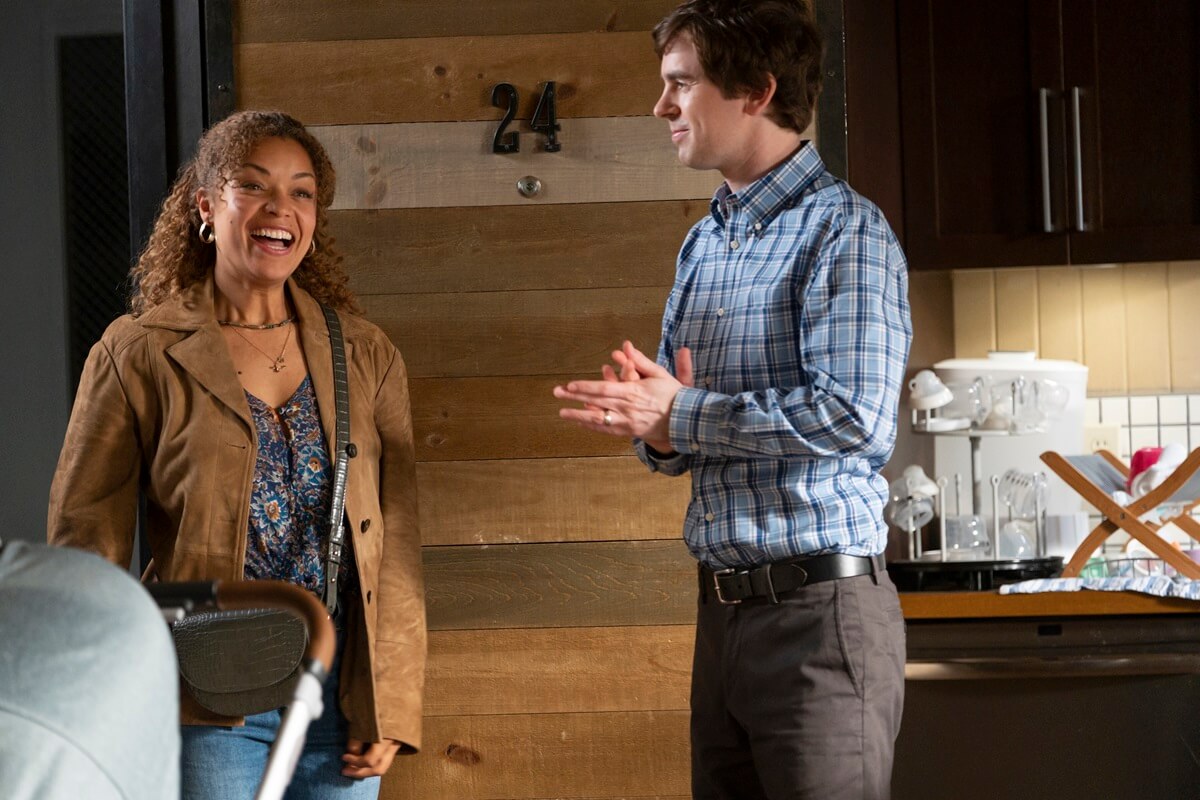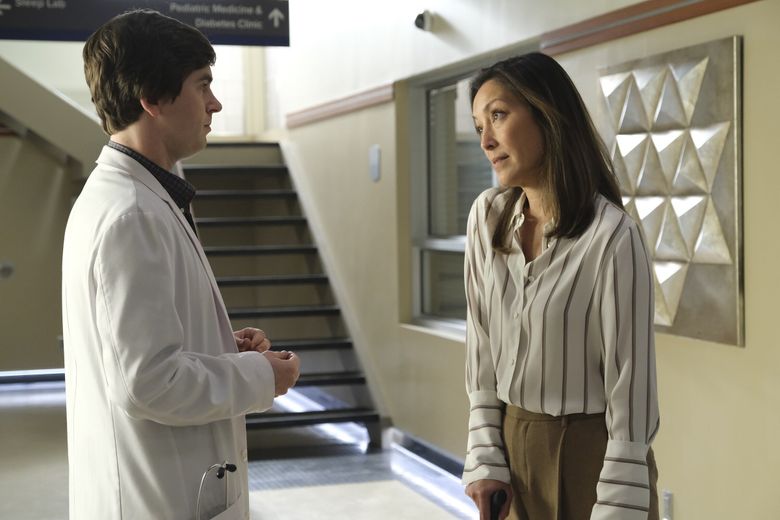
She plays a surgeon on TV’s “The Good Doctor,” but 1993 University of Washington master of fine arts grad Christina Chang says she didn’t pick up much in the way of actual medical training over the show’s seven-year run.
“Honestly, if I were playing a pediatrician, probably [I would have],” says Chang, mother to a fifth grader. “But I’m playing a surgeon, and for the purposes of television, one that is really good at all surgery. She has no area of expertise. So I’m constantly saving — or not, but mainly saving — anything from a preemie to someone whose head is internally decapitated. There’s just nothing applicable to my daughter.”
Chang joined the cast of “The Good Doctor” in its first season as Dr. Audrey Lim, who rose to become chief of surgery at St. Bonaventure Hospital in San Jose, Calif. But “The Good Doctor” films in Vancouver, B.C., so she’s returned to Seattle occasionally over the show’s run.
“I still have friends that live there,” she says. “It’s the PNW so it is very similar, but obviously they have their differences, too.”
Chang moved her family to Vancouver in the pandemic (before that, she commuted from Los Angeles during early seasons of “The Good Doctor”), but come April, Chang’s not sure where she’ll live. The rare stability a successful TV series provides for a working actor will end: ABC announced in January that this shortened-by-the-strikes, 10-episode season will be the show’s last.
“The Good Doctor” (season premiere 10 p.m. Feb. 20 on ABC, next day on Hulu) focuses on Shaun Murphy (Freddie Highmore, “Bates Motel”), a doctor with autism.

Chang, who was born in Taipei, Taiwan, to a Chinese Filipino father and American mother, moved to the United States for college at the University of Kansas. In her first two years, Chang studied acting, but she also thought she might end up in broadcast journalism.
“It wasn’t until my junior year when everyone knew what they were doing and had to declare their majors, and I thought, ‘Oh, my gosh, I think it’s going to be acting,’ and I was really nervous because I hadn’t really focused on that. And I thought, ‘How am I going to do this in two years and then just go out into the world and make this a profession?’ ” Chang recalls. “I decided that I probably needed some additional training.”
That led Chang to audition for multiple grad school acting programs, choosing UW because of her comfort with the head of the program at the time, Steve Pearson.

“I really liked him and what he had to say about acting and I liked the conversation and connection we had,” she says. “I went out sight unseen. I had never visited the school. I’d never been to the city. I thought, ‘Well, if they kick me out of grad school, it’s a city that’s vibrant with the Seattle Rep, Seattle Children’s Theatre and ACT and the Annex, so I’ll still have a shot at theater.’ ”
During her last year at UW before graduating and moving to New York, Chang had the opportunity to intern at a local theater company and was torn between an understudy role at Seattle Rep and a leading role in “Naomi’s Road” at Seattle Children’s Theatre.
“It was a difficult decision,” Chang says. “But I thought, if I want the experience of working on a stage professionally, I have to take Seattle Children’s Theatre. I would have loved to have worked with Dan Sullivan at Seattle Rep, but I thought, what if I never go onstage? I wanted that practical experience. It was a wonderful experience working with Linda Hartzell. I love Seattle Children’s Theatre.”
Chang describes her time in Seattle during the ’90s heyday of grunge as “nostalgic and sentimental” due to where she was in her life.
“It was on the precipice of adulthood and professional acting,” she says. “I always feel so fond of Seattle.”
What she learned about acting at UW stayed with her, even if she didn’t anticipate a future working in TV at the time.
“I wasn’t interested in television and film at all when I went to grad school,” she says. “I had an offer to go to a couple other schools that were more film- and television-focused and I turned them down because I was interested in theater. Irony.”
For “The Good Doctor,” Chang learned how to perform surgery scenes through abundant rehearsal.

“We shoot nine days [per episode]. Any time you see a surgery, those scenes are usually [filmed on] the last one or two days,” she says. “We usually do those surgery rehearsals the day of filming. We all have a rhythm. And we have the medical consultants say, ‘OK, it’s a bypass, right? You’ll be suctioning because there’s gonna be a lot of blood pooling.’ And we usually just practice over and over what the cut looks like, the suturing.”
As for how “The Good Doctor” will wrap up, executive producer Liz Friedman says knowing the end is near allows the show’s writers to “do something that we think the fans will love, so we’re glad to have that opportunity.”
Chang has a specific hope for her character.
“I would love for something really juicy personally for her,” she says. “She’s shown the viewers season upon season that she’s a fairly capable surgeon and a leader and boss, a relatively fair mentor. She’s been in a wheelchair. She’s had surgeries. Now she walks again. So I think I’d like to see a good thing for her: a happy, juicy relationship.”
